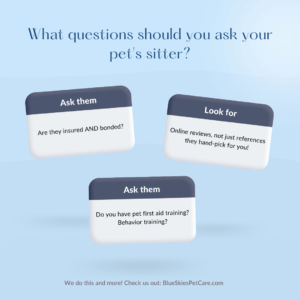Invisible fences, often promoted as a sleek, modern solution for dog containment, can appear at first glance as the epitome of convenience and technological innovation to preserve the aesthetics of your property. But the absence of a physical barrier comes with its own set of invisible concerns. These range from the mental well-being of your pet to legal liabilities you might not have considered. This guide explores the multi-dimensional concerns surrounding the use of invisible or electric fences for dogs.
The Psychological Toll: More Than Just an Electric Shock
The idea of a pet receiving an electric shock for behavior correction raises ethical questions, but what about the psychological toll on the dog?
Fear of the Outdoors
Dogs that are repeatedly subjected to electric shocks when venturing close to the boundaries of their yard can become increasingly nervous or fearful about going outside. What should be a haven for play and relaxation can turn into a place of anxiety and fear.
Research Evidence
• Polsky’s research indicates that electric fences can cause dogs to display increased signs of fear, aggression, and behavioral changes[1].
• Another study by Schilder and van der Borg found that dogs subjected to electric shocks exhibited elevated stress levels and signs of fear and anxiety[2].
The One-Way Barrier: A Security Illusion
An often overlooked downside of invisible fences is their one-sided nature. While your dog may be confined, other animals or humans are not prevented from entering your property. Real-life incidents underscore this drawback. For example, in 2023, a small dog confined by an invisible fence was injured by a coyote that had free access to the yard[3].
Potential Intruders
While your dog may be confined, nothing prevents a stray dog, a wild animal, or even a person with bad intentions from entering your property. In such situations, your dog becomes an easy target with no means of escape, potentially leading to distress, injury, or death.
Documented Incidents
One harrowing story from 2023 revealed a small dog that was injured by a coyote, highlighting the flaws of a one-way barrier [3]. In her interview, it was noted that her small dog was confined to her yard by a fence collar, but the coyote came onto her property. She noted that it may be time for a physical fence.
The Exit and Re-entry Conundrum: A Perilous Cycle
Dogs that do manage to escape the electric boundary are faced with a precarious situation: getting shocked again if they try to re-enter their ‘safe’ zone.
The Irony of Return
Imagine your dog chasing after a high-value squirrel or being scared by fireworks and running past the invisible line. When he tries to return, the collar activates again, deterring him from coming home and leaving him exposed to outside dangers like traffic or aggressive animals. Stories fill pet forums and social media, narrating families hunting dogs down for miles, whose dogs repeatedly escape (due to human error, technical error, both), etc. Search “invisible fence fail” for examples.
Legal and Financial Liability: A Pandora’s Box
Invisible fences also open up a can of worms when it comes to legal liabilities.
If your dog crosses the boundary and damages property or injures someone, you could be held responsible. Moreover, since the fence doesn’t prevent human entry, if someone were to wander into your yard and get bitten by your dog, you might find yourself in legal hot water.
Misassociation of Shocks: A Recipe for Behavioral Issues
Because invisible fences deliver a shock without clear visual cues, a dog might associate the discomfort with something else entirely—like a child passing by, a car, or another animal.
Psychological Ramifications
Most often displayed in the form of “unwanted barking,” this misassociation can also lead to unwarranted fears or aggression, potentially making your dog a danger to himself and others.
Re-evaluating the “Convenience” of Invisible Fences
Before you decide to install an invisible fence, consider the multifaceted risks involved. From your dog’s psychological health to your legal standing, the impacts are far-reaching.
Alternative Solutions
Rather than subjecting your pet to a life with an invisible fence, consider more humane and effective alternatives. Traditional fences, professional dog training, and supervised outdoor activities can provide a safe, enjoyable environment for your dog.
As we have delved into the many risks and drawbacks of invisible fences, it’s only fair to discuss the more humane and effective alternatives available to dog owners. Keeping your dog safe, happy, and well-exercised doesn’t have to come at the cost of their psychological and physical well-being or expose you to potential legal liabilities.
1. Traditional Fencing: The Tried and True Method
Perhaps the most straightforward method of ensuring your dog’s safety is the use of traditional fences. These physical barriers offer a clear boundary for your pet while simultaneously keeping other animals and people out. Varieties range from wood, chain-link, to modern vinyl fences that require minimal maintenance.
Pros
• Provides a clear, physical boundary
• Keeps both your pet and external threats out
• Can be aesthetically pleasing and add to property value
Cons
• Can be costly to install
• May require regular maintenance (as do shock fences)
• HOA may limit your options
2. Leash Training and Supervised Outdoor Time
Leash training, combined with on-leash supervised outdoor time, ensures that your dog gets the exercise it needs while staying close to you. This method is particularly effective for dogs that respond well to voice commands and have a strong bond with their owners.
Pros
• Enhances the human-animal bond
• Allows for interactive and enriching experiences
• No risk of accidental shocks or psychological distress
Cons
• Requires a time commitment from the owner
• Not ideal for dogs with high energy levels that require more free roaming
“I’m concerned my dog will escape their physical fence.”
Professional Dog Training
Positive reinforcement training programs, conducted by certified professionals, can be an incredibly effective method for teaching your dog boundaries and acceptable behaviors.
Pros
• Addresses the issue at its root by altering behavior
• Long-lasting effects
• No use of punitive or harmful methods
Cons
• May require an ongoing time and financial investment
•Effectiveness can vary from dog to dog
GPS Solutions
Some pet owners opt for tech-based solutions that involve GPS collars and smartphone apps. These methods rely on tracking rather than electric shocks to notify you if your dog has wandered too far. So if your dog escapes your property while you are still training them and working on management, you are able to find them! (Be sure your pet also has clear ID with a phone number you will answer if they are found by a stranger!)
Pros
• Allows for greater freedom of movement for the pet
• Provides real-time tracking
• No use of electric shocks
Cons
• May require regular subscription fees
• Relies on battery life and signal strength, which can be inconsistent
By opting for one of these alternatives, you’re not only ensuring a safer and happier life for your four-legged friend, but you’re also likely to find a solution that makes you more comfortable as well. Always remember, the safety and well-being of your pet should be the primary factors guiding your choice of a containment method.
References
[1]: Polsky, R. (2000). Can Aggression in Dogs Be Elicited Through the Use of Electronic Pet Containment Systems? Journal of Applied Animal Welfare Science, 3(4), 345–357.
[2]: Schilder, M. B. H., & van der Borg, J. A. M. (2004). Training dogs with help of the shock collar: short and long term behavioural effects. Applied Animal Behaviour Science, 85(3-4), 319-334.
[3]: Security video captures moment coyotes attack dog in Waukee
By shedding light on these less-discussed aspects, this article aims to empower dog owners to make informed, ethical choices that prioritize their pets’ long-term well-being.




